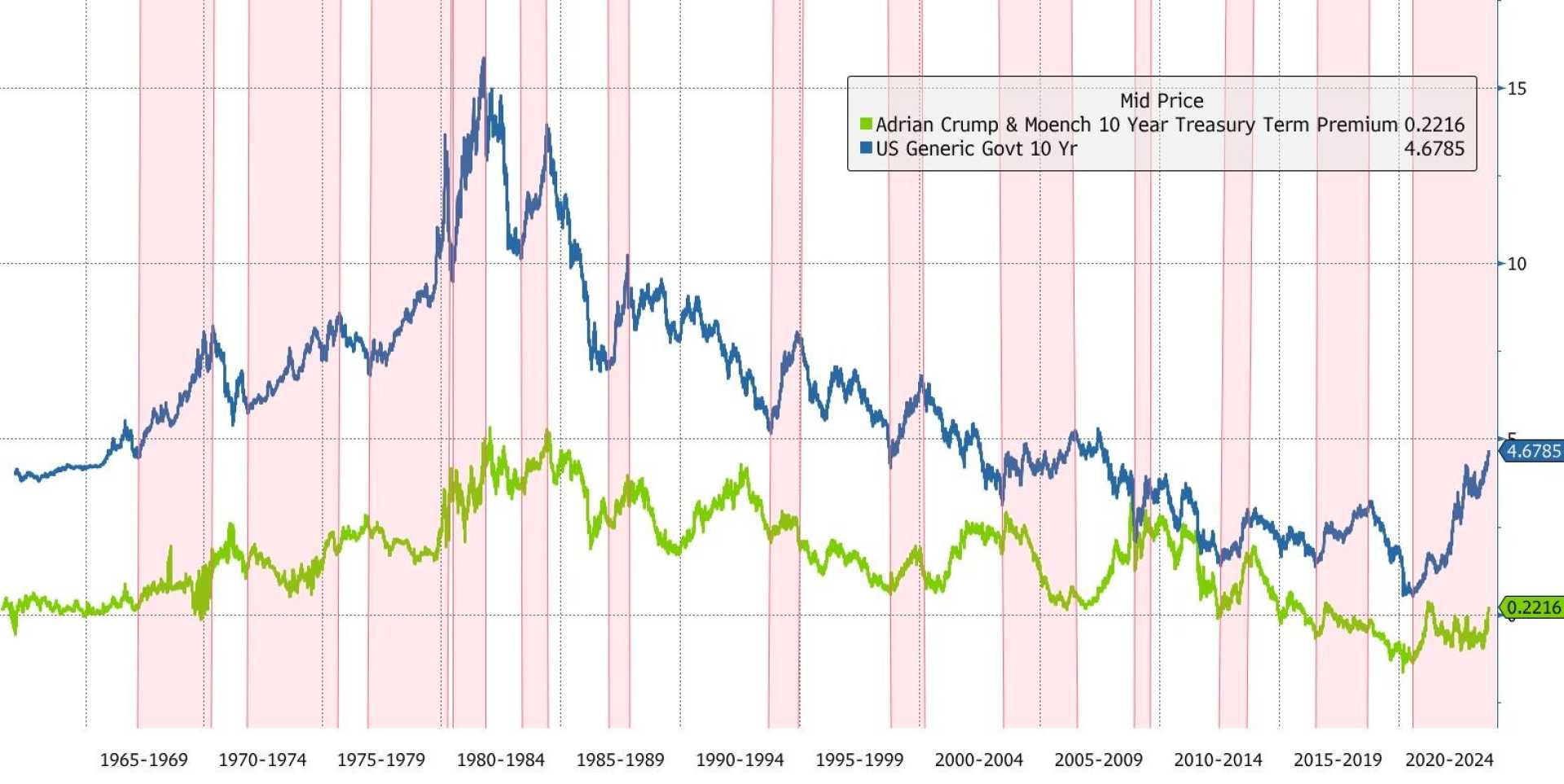Business
U.S. Treasury Yields Surge as Term Premium Drives Market Shift

U.S. Treasury yields have surged in recent months, with the 10-year yield approaching 4.5%, driven primarily by a rising term premium rather than shifting expectations for Federal Reserve policy. According to analysis, approximately 80% of the increase in yields can be attributed to the term premium, which compensates investors for holding long-term bonds amid heightened risks.
The term premium, though still low by historical standards, reflects investor concerns over a potential regime shift in interest rates. Analysts suggest that markets are pricing in higher government spending, larger fiscal deficits, and increased volatility under the incoming presidential administration. This has led to a recalibration of the equilibrium level for the 10-year Treasury yield, now estimated to range between 4.5% and 4.75%.
Joe Brusuelas, chief economist at RSM US LLP, noted that the 10-year yield could average 4.5% in 2025, with a trading range of 4.3% to 4.7%. However, he warned that a breach of the 5% threshold could pose significant risks, particularly for regional banks holding substantial commercial real estate debt. Such a scenario could echo the mini banking crisis of March-April 2023, which prompted the Federal Reserve to establish the Bank Term Funding Facility to stabilize the financial system.
Brusuelas, a member of the Wall Street Journal’s forecasting panel and Bloomberg’s list of Best Bond Forecasters, emphasized that the current environment reflects a departure from the low-rate regime that has dominated the past two decades. Investors are now grappling with the implications of expansionary fiscal policies and their impact on long-term interest rates.
The rise in yields has also reignited concerns about the broader economy, particularly for midsize companies and regional banks. With 70% of commercial real estate notes held by these institutions, refinancing challenges could emerge if rates continue to climb. This underscores the delicate balance policymakers must strike between managing inflation and ensuring financial stability.
As markets adjust to this new reality, analysts will closely monitor Federal Reserve guidance and fiscal policy developments. The interplay between these factors will likely determine the trajectory of Treasury yields and their broader economic implications in the coming years.












